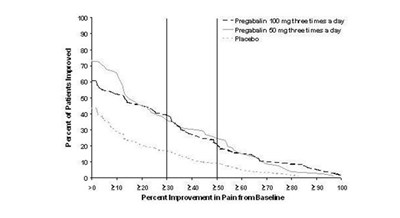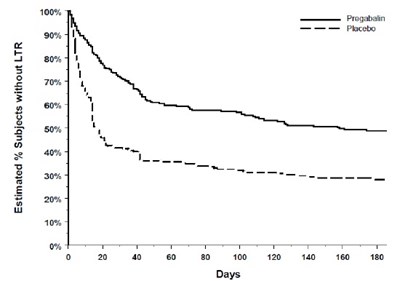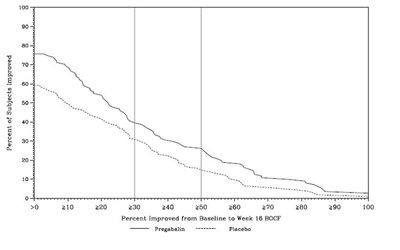Product Images Pregabalin
View Photos of Packaging, Labels & Appearance
- Label - lbl636298198
- Label - lbl6362981982
- Figure 1 - pregabalin fig01
- Figure 2 - pregabalin fig02
- Figure 3 - pregabalin fig03
- Figure 4 - pregabalin fig04
- Figure 5 - pregabalin fig05
- Figure 6 - pregabalin fig06
- Figure 7 - pregabalin fig07
- Figure 9 - pregabalin fig08
- Figure 10 - pregabalin fig09
- Figure 11 - pregabalin fig10
- Figure 12 - pregabalin fig11
- Cockcroft and Gault equation - pregabalin formula
- Chemical Structure - pregabalin str
Product Label Images
The following 15 images provide visual information about the product associated with Pregabalin NDC 63629-8198 by Bryant Ranch Prepack, such as packaging, labeling, and the appearance of the drug itself. This resource could be helpful for medical professionals, pharmacists, and patients seeking to verify medication information and ensure they have the correct product.
Label - lbl636298198

This is a description of Pregabalin capsules containing 150mg of the active ingredient. The capsules are to be stored at room temperature and kept away from children. The product is manufactured by H BRP Pharmaceuticals and comes in a package containing 30 capsules.*
Label - lbl6362981982

This appears to be a packaging label for a medication called "Lyrica 150mg" manufactured by ScieGen Pharmaceuticals Inc. The medication comes in a capsule form and is packaged with an expiration date ("EXP") and lot number ("/8v€¢Sl 101"). The packaging was done by Bryant Ranck Prepack and the medication should be stored at room temperature. It contains the National Drug Code (NDC) 6362981981 and a warning to keep it out of reach of children.*
Figure 1 - pregabalin fig01

The text is presenting quantitative data (percentages) on the percentage of patients who improved and the percent improvement in pain. However, the presentation is unclear and may not be useful without additional context.*
Figure 2 - pregabalin fig02

This appears to be a chart or table displaying the percent of patients who improved with Pregabalin 160 mg over the course of three days, along with some numerical values (2, 10, 100) and another section that may relate to pain improvement from baseline. The text is not entirely clear, as there are some irrelevant characters and words like "Facebook", and the formatting is unclear.*
Figure 3 - pregabalin fig03

The text is providing information related to different medicines and improvement in pain. It also shows percentages related to patient improvement. The available information is not clear enough to provide a useful description.*
Figure 5 - pregabalin fig05

This is a study comparing the effectiveness of two drugs, Pregabalin and Placebo, with Fregabalin 100 mg administered three times a day. The data shows the percentage of patients improved and the percentage improvement in pain, with the numbers ranging from 0.8 to 100.*
Figure 6 - pregabalin fig06

This appears to be a table or graph displaying information about studies labeled E1, E3, and S5, with various dosages of medication administered. The medication was compared to a placebo and found to be statistically significant. Not available to determine the specifics of the medication or the study's purpose without additional context.*
Figure 10 - pregabalin fig09

This appears to be a chart or graph showing the percentage of subjects without LTR (not clarified what LTR means) over a period of 120 to 180 days. The chart displays two columns labeled "Progabain" and "Placebo". It is not clear what the X-axis represents.*
Figure 12 - pregabalin fig11

The text describes a graph showing the improvement percentage of subjects between the values of 210 and 270, with the highest percentage being 100. The graph compares the improvement between two treatments, Pregabalin and Placebo, showing that both treatments have a higher improvement percentage than the baseline at week 16. The graph also shows additional values at intervals of 10 up to 280 for Pregabalin and up to 200 for Placebo.*
Cockcroft and Gault equation - pregabalin formula

This appears to be a formula for calculating the estimated creatinine clearance (CLCT) in adults based on age, weight, and serum creatinine. It is specified that the formula should be multiplied by 0.85 for female patients. However, there are a few unreadable characters, so some of the details are unclear.*
* The product label images have been analyzed using a combination of traditional computing and machine learning techniques. It should be noted that the descriptions provided may not be entirely accurate as they are experimental in nature. Use the information in this page at your own discretion and risk.




